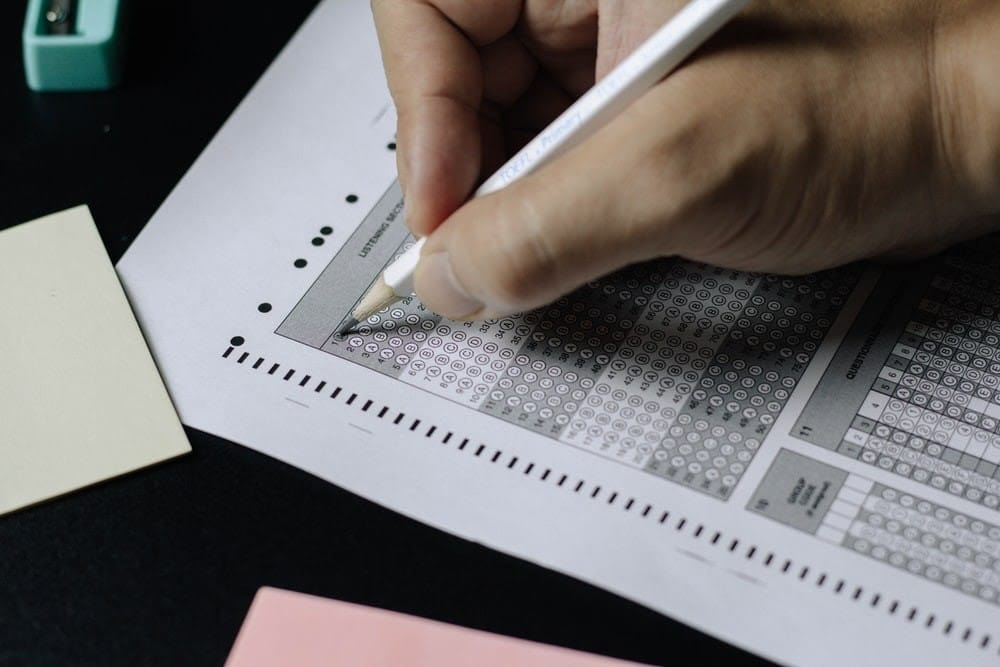How Long is the ACT and How to Pace Yourself During the Exam?
Updated: June 19, 2024
Published: August 6, 2021

Part of the college admissions process may require you to take the ACT or SAT. When deciding between which exam you’d rather select, you’ll probably ask questions like, “Which exam is more difficult?” and “How long is the ACT?”
If you’ve decided to take the ACT, then continue reading because we have all the answers you’ll want to know before attending your test day.

What is the ACT?
The ACT is a standardized exam that many colleges and universities require in order to make their admissions decision. ACT, Inc. administers the multiple-choice test that is taken manually.
The test consists of the basic subjects and is aimed at gauging a student’s college readiness. Naturally, the higher you score on the test, the better.
Along with your ACT score, most admissions committees will also look at your high school GPA, difficulty of coursework as displayed on your transcript, letters of recommendation, extracurricular activities, and may conduct interviews with you as well.
What is on the ACT?
The ACT consists of the following sections:
- English
- Reading
- Science
- Math
- Writing (optional)
The highest score one can achieve is 36, but the average is 21. For those who take the writing portion of the test, that section is scored separately.
The cost of the test also varies depending on whether or not you include the writing portion, and if you’re a US resident or not. The pricing is as follows:
- US without writing = $50.50
- US with writing = $67.00
- Non-US without writing = $150.00
- Non-US with writing: $166.50
How Long is the ACT?
The ACT is a 2 hour and 55 minute exam. With the writing section, that increases to 3 hours and 35 minutes.
How Many Questions are on the ACT?
Here’s a breakdown of how that total time comes to be by section:
- English – 45 minutes (75 questions)
- Math – 60 minutes (60 questions)
- Science – 35 minutes (40 questions)
- Reading – 35 minutes (40 questions)
- Writing (optional) – 40 minutes (1 essay)
Test-Taking Tips for Time Management
Budget Your Time
When you take the test (and even practice tests), you’ll learn that keeping an eye on the clock is an important aspect of budgeting your time. Since you have a set amount of minutes for each section, you have to be aware of your timing.
However, when you answer a question and then stress about how much time is left, you’ll lose time ultimately. Instead, get into the habit of knowing roughly how much time you can spend on each question.
Know the Format
The only way you can know how much time you can allocate to each question is to memorize the format of the test. Practice exams make this easy. Additionally, reviewing the format as outlined above can only help you.
Easy First
When you’re sitting for the exam, you will know which questions seem harder and which seem easier to you. Be sure to answer all the “easy” questions as quickly as possible.
Remember, the easy questions may be interspersed with the hard questions. For this reason, there’s no rule that says you have to answer the questions in order. Go through the sections and answer all that you can by skipping through the questions that are taking you extra time. Make a note of them and come back to them with your remaining time.
Timed Practice
As you take practice exams, you’ll become very aware of the format and timing of the exam. But it’s still important that you’re actually timing yourself. Consider using a timer at the beginning of each section so that you’re not constantly having to stare at the clock and calculate how much time remains.
Focus on High-Yield Topics
There are specific topics that will be on the test no matter what. To exemplify, you can be confident that there will be punctuation questions in the English section. So prepare for them! By taking practice exams, you’ll begin to notice the recurring themes. Prepare well for those topics so that you can be sure you’ll get the points from answering those questions correctly.
Know Your Calculator
Choose a calculator that meets the criteria for the exam in advance. Use it and get to know it well so that on test day, it’s not causing your more harm than help. These calculators can become complex with their capabilities. The only way to know how to use them properly is to practice.
No Blanks
When they say, “less is more,” they are not talking about the ACT. There is no penalty for guessing or answering questions incorrectly on the ACT. For this reason, you have nothing to gain by leaving any bubbles blank. When the time is about to expire and you see empty bubbles on your sheet, fill them in with a guess. You have at least some chance in getting them right that way.
ACT Test Day: Plan Your Schedule
On the days leading up to the big exam day, it’s natural and understandable to feel some anxiety. However, if you prepare for the day’s schedule, you can alleviate a lot of your stress.
By the time the clock strikes 8:00 am, you are no longer able to enter the test center. This is why it’s best to plan to arrive between 7:30 and 7:45 am. To be admitted into the test center, administrators will check your ID and admission ticket. Then, you find the room which you’ve been assigned to take the test in.
The proctor passes out the test booklets and scantrons, and shares some detailed instructions. After roughly 30 minutes of this, you’ll likely begin your test sometime between 8:30 and 9:00 am.

What to Expect
As mentioned, the test takes anywhere from 2 hours and 55 minutes to 3 hours and 35 minutes (depending on if you take the writing section or not). These estimates don’t include your time for breaks.
For students who take the test sans writing, you have one 10-minute break after you complete the math section. At this time, you can go to the bathroom or have a snack. However, you won’t be able to use any electronic devices or exit the building.
For those who take the writing section too, you will have one more break before this section for just 5 minutes.
Training Strategies for the ACT
Besides training with practice exams, you can use training strategies to increase your ability to focus and strengthen your mental muscles. Consider reading for extended periods of time without distraction (as you’ll have to read passages on the exam).
Additionally, brain-training puzzles are a great and fun way to train your brain to boost memorization or focus.
The Bottom Line
Unless you attend a college like the University of the People (which doesn’t require standardized test scores for admission), then knowing “how long is the ACT?” is just the beginning of your test-taking journey.
Choose your test date and work backwards so that you give yourself enough time to prepare to budget your time and do as best as you possibly can on this important exam.
